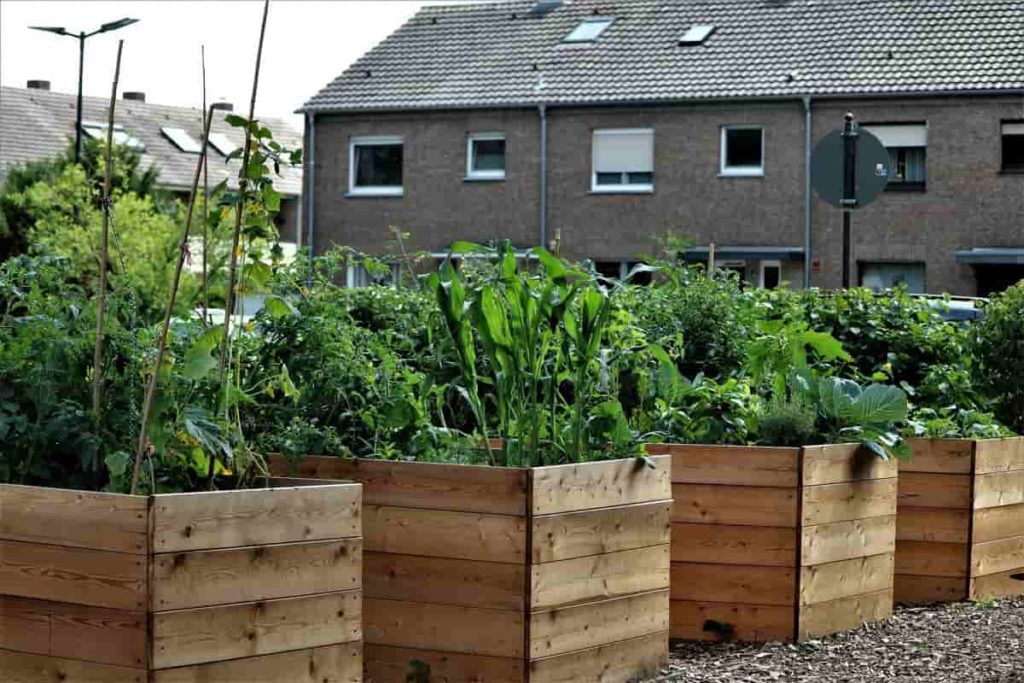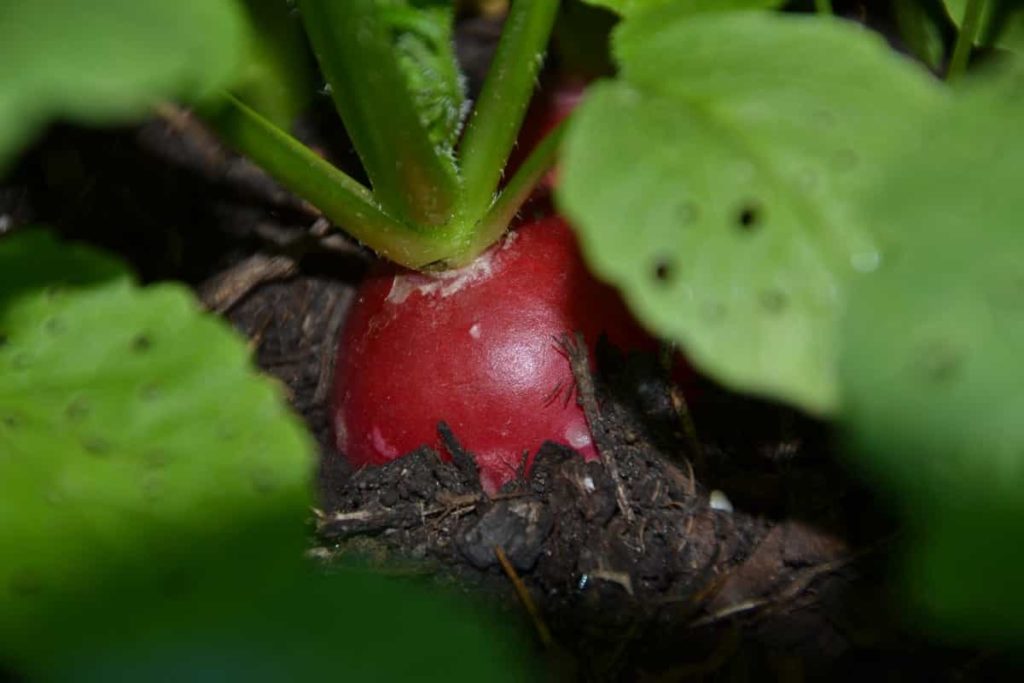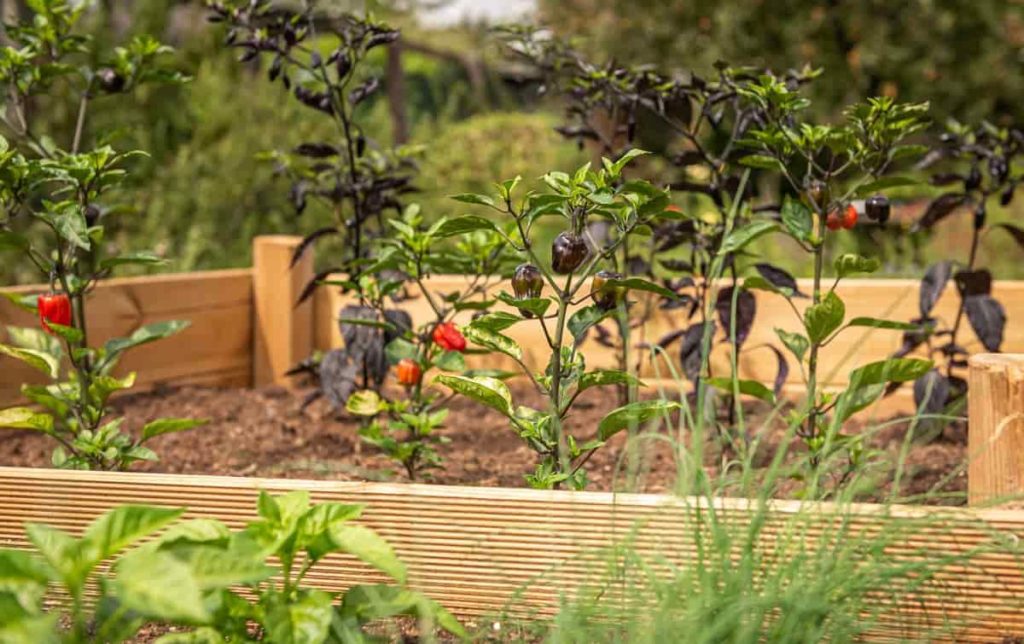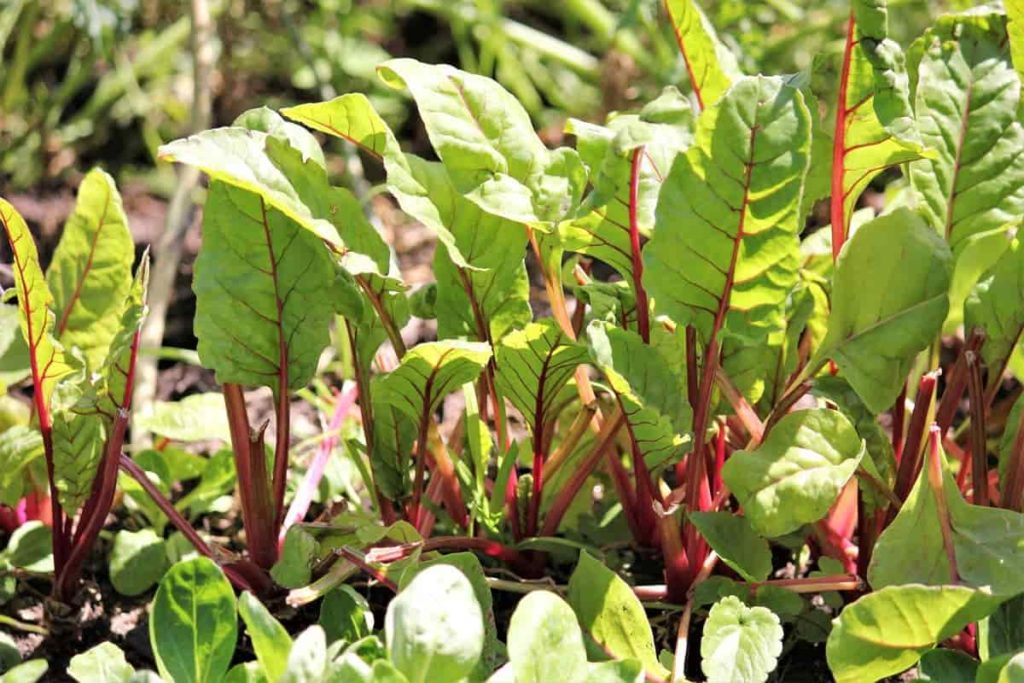Introduction to top 25 vegetables to grow on raised beds: Raise beds are freestanding beds built on the natural ground level. A planting bed consists of raised soil at the current soil level and is enclosed within a structure. It is possible to design raised beds formally or informally and rectangular or irregularly shaped. Vegetable gardens can be designed either way. It is not necessary to construct raised, very deep beds. Usually, 8-12 inches will suffice.

Vegetables to grow on raised beds
Bush beans
It is easy, quick, and compact to grow bush beans in raised beds. Most varieties are ready to harvest within 50 to 55 days after seeding. However, planting bush beans before the last spring frost is impossible since warm-season vegetables. In cold, wet soil, you may find the seeds do not germinate. However, Bush beans get a healthy start in raised beds because of the early warmth and the well-draining soil.
To ensure a long season of tender pods, resow seeds every three weeks from late spring to mid-summer. Pole beans are another option for home gardeners, but they do better in raised beds because they do not require support. So instead, plant pole beans in bean towers, bamboo posts, or netting to reach a height of six to nine feet. Using sturdy four-by-eight-foot wire trellises behind my raised beds or constructing pole bean tunnels between them is one of my favorite ways to grow pole beans in a raised bed garden.
Cucumbers
Freshly picked garden cucumbers are a great way to cool off on a hot summer day. Cucumbers are warm-weather vegetables. The week after the last spring frost, seed them into garden beds or containers. You can also purchase seedlings from a garden center and plant them. To grow the best cucumbers, give them adequate compost and water consistently. Pick-a-Bushel, Saladmore Bush, and Spacemaster are compact bush cucumbers that climb a tomato cage if space is limited. Try varieties such as Suyu Long, Lemon, and Diva if you have more space in your garden.
Garlic
As a vegetable, garlic can be planted and left to grow. Mid-autumn is the best time to tuck individual cloves into the garden. Do not harvest until early or mid-summer the following year. Pests and diseases don’t bother the plants, and they grow well in regular garden soil. Avoid planting sprayed garlic from the supermarket. Instead, you can buy garlic from your local garden center or farmer’s market. Once the beds are planted, mulch them with straw to hold moisture and reduce weed growth. Hang the plants in a dry spot to cure for two weeks after harvesting when half of the leaves have turned yellow. Wash and store bulbs after cured—the best vegetable for beginners.
Leaf lettuce
Leaf lettuce is quick and easy from seed to harvest, unlike most salad greens. Plant seeds directly in garden beds in mid-spring, sprinkling them along with a six-inch band. Sow leaf lettuce in containers, window boxes, and fabric grow bags, keeping the soil moist until the plants grow well.
In case if you miss this: 23 Vegetables to Plant in the Rainy Season in India

You can pick baby greens when they are between two and four inches long. If you clip the leaves from the outside of the plant, the center will continue to grow, extending the harvest. Leaf lettuce varieties like Red Salad Bowl, Red Sails, Lollo Rossa, and Black Seeded Simpson are found in any seed catalog. The prettiest salads have a small band of different leaf textures and colors.
Onions
Raised beds are the perfect place to grow onions for three reasons. First, they need quick-draining soil, plenty of organic matter, and a long growing season. Raised beds allow you to customize the soil by adding what you need, so if you know you’ll be planting onions in your raised beds, make sure to add plenty of compost.
Taking over 100 days for onions to mature from seed is not uncommon. You should give these babies the longest possible time in the garden if you live somewhere with four seasons. Finally, the soil in a raised bed warms up quicker than the ground, so you can plant onions earlier, giving them a head start.
Tomatoes
It is necessary to have nutrient-dense soil for tomatoes to thrive. A raised bed allows you to tailor your soil to your needs by adding extra compost as you fill it. The only downside to growing tomatoes in raised beds is that tomato cages and stakes don’t stand as well in loose soil.
Potatoes
In addition to growing well in a raised bed, potatoes are much easier to harvest. It is best to hill the soil around the plants when growing. The hills are easily contained in a raised bed, which you can add to as your plants grow. Loam soil is ideal for potato cultivation since it drains well. It’s best to spread out in the soil quickly, and loose soil will prevent them from rotting. The soil in a raised bed is controlled entirely. Higher yields and bigger tubers are typical of potatoes grown in raised beds. These are some of the crops that will thrive in raised beds. If you plan well, you can also grow vining crops vertically on trellises, which will grow more efficiently. So get your hands in the dirt now that you know what a raised bed can do.
Carrots
Planting, growing and thriving in a raised bed. Raised beds have loose, aerated soil, giving root vegetables like carrots lots of space to grow. The needs of different carrot varieties vary, but you can plant about 18 carrots per square foot. The seeds of carrots are tiny and require planting only about 14 millimeters deep. Carefully water the carrots, making sure not to wash away the seeds.
Kale
It takes a square foot per plant to grow Kale. Kale also prefers cool weather, so you may want to plant yours where it gets a little afternoon shade. For example, the Kale could be planted near the tomato plants to protect them from the afternoon sun if you have tomato plants in your raised bed.
Radishes
Radishes overgrow, so they are the best vegetable to plant in raised beds. Radish seeds are sown alongside larger plants. As a result, radishes are ready to harvest in 35 to 60 days, long before your larger plants become mature. Radishes can be squeezed into any tiny hole or space you need to fill. Place the seeds in a small trench, then dig a small hole into growing them. Sprinkle a light layer of soil over them and water them carefully. Radishes are susceptible to washing away.
In case if you miss this: 20 Vegetables to Plant in Winter in India

Spinach
It is safe to plant spinach near lettuce and radishes. However, you may need to start your spinach early since it grows best in cooler weather. Then, when the weather begins to cool again in late summer or early fall, plant more spinach in the spot once the spinach has been harvested. If planted in the right conditions, the spinach seeds will germinate in a week. But, again, as with lettuce, plant the seeds in the right conditions.
Cucamelons
You might be interested in cucamelons if you love cucumbers but don’t have much space. These miniature cucumbers look like watermelons but taste like lemony, sweet watermelons. It is essential to have a trellis for growing these delicate veggies since they grow on small vines. About six weeks before your last frost date, you can start cucamelons indoors in compostable pots. Plant them in your raised bed after they’ve hardened off for a week or two.
Summer squash
Even if you plant only one summer squash plant, you will always have more than you can eat. Direct sow seeds in a bed amended with compost or manure (Zucchini are GREEN). When the fruits start to form, harvest them before reaching their peak quality. Choose pattypan and round varieties when the fruits have two to three inches in diameter. Choose zucchinis with a length of four to six inches. You can try a lot of beautiful varieties in your garden. You can also find heirloom zucchini varieties like Costate Romanesca, which has alternating dark and light green stripes, and pattypan squash, which has an adorable scallop shape. Choose bush varieties like Patio Green Bush or Astia for containers.
Beans
The two basic types of beans that you can grow in raised beds are green beans and black beans. Bush beans are smaller and do not require trellising. Your bush beans should be planted every two weeks during the summer for the best harvest. Pole beans are also suitable for planting in your raised bed, but they require a trellis, pole, or wire. Beans are produced longer. The beans are planted in a sunny spot about six or seven inches apart and one inch deep. Plant bush beans a little thinner but leave room for pole beans to grow up the trellis. If you have lettuce or spinach, you can place your trellis to provide a little afternoon shade.
Celery
It is possible to plant seeds or plant a new plant from the center of a bunch of celery purchased at the supermarket. It would help if you started your celery seeds indoors eight to ten weeks before the last frost date since celery prefers cooler temperatures. However, harden off your seedlings first before transplanting your seeds into raised beds. Compost and water are essential to celery’s growth. The roots of the plant will rot if it sits in soggy soil. You can harvest continuously from the plant after it is established.
Peppers
Peppers prefer sun and heat, so you can plant them right alongside your tomato plants if you desire. In addition, peppers are relatively low maintenance.
In case if you miss this: Top 15 Fruits to Grow in Pots

Arugula
Growing this salad green in a raised bed is easy. Similarly, it prefers a little bit cooler temperature to spinach and lettuce. It would help if you planted it to get some afternoon shade in the summer heat. Arugula seeds are tiny and can be easily lost when planting them. The best results will come from planting your arugula in a small block of space. Spread the seeds evenly across the soil after the soil is nice and smooth. Gently pat the seeds in, then water lightly.
Peas
Peas taste like spring, and we can never grow enough of them. Peas come in three varieties: snow peas, sugar snaps, and shell peas, and all are easy to grow. About four to six weeks before the last anticipated frost, snow pea seeds in early spring after loosening and enriching the soil—space six inches apart two to two-inch-wide rows of seeds. Before you plant a variety that needs to be staked, you should add a pea trellis or hang netting. Peas can also be grown in containers and plants – choose super dwarf varieties like Tom Thumb and Patio Pride, which grow only six inches tall.
Cherry tomatoes
The most popular garden vegetable in North America is the tomato. Cherry tomatoes start producing around two months after transplanting, but large-fruited varieties take longer. Once the risk of spring frost has passed, plant healthy seedlings in garden beds or large containers. If you’re growing cherry tomatoes in your garden, choose varieties like Sun Gold (crazy sweet, my all-time favorite), Jasper (blight resistant), and Sunrise Bumble Bee (yellow with red stripes). During planting, the stakes or supports will need to be solid. Then, tie it to the stake with twine as the plant grows. Try Sweetheart of the Patio, Tumbler, or Terenzo for compact growth in containers.
Beets
In 60 days, beets are ready for eating. But first, give them a little room, so plant your seeds about 2 to 3 inches apart and no more than an inch deep. To grow large enough beets, make sure your raised bed is at least 12 inches deep. The soil should be kept dry and well-watered to prevent beetroots from rotting—beets that are still a little on the small side make for tastier, sweeter beets.
Courgettes
Are we looking for the best vegetables to grow in raised beds to produce bumper crops? When it comes to growing your vegetables, courgettes are the perfect option. You will be able to harvest several courgettes a week if you plant just one plant. When growing a trailing variety, tie the main stem to a stake as it grows rather than letting it creep along the ground.
In April, plant seeds indoors, transplant them outside when they are big enough to handle, and harvest them about eight weeks later.
Zucchini
Humidity and full sun are Zucchini’s favorite things. Sow your zucchini seeds directly into your raised bed or container when the soil is warm. Keep the soil loose and aerated by mixing in aged compost.
Swiss chard
Swiss Chard can be grown in raised beds or container gardens since it is colorful and nutritious. Spring is a great time to plant Swiss Chard because the weather is still great. Swiss Chard thrives in both heat and cold. You should space your Swiss Chard 12 to 18 inches apart. Ensure that the Swiss Chard is well watered. It is ready to be eaten as soon as the leaves are large enough. Newer leaves are tenderer and more flavorful.
In case if you miss this: Top 10 Vegetables to Grow in Pots

Rocket
If you want to grow vegetables in raised beds, the rocket has to be on the list. Rocket is easy to grow and overgrows. The soil should be rich, and there should be ample water in a sunny, well-drained area. Thin plants continuously if you’re planting directly into the ground for a healthier harvest. When picking the leaves, you can control how it tastes,’ say experts at Squire’s Garden Centres. Rocket has an unmistakable flavor. Older leaves taste lovely when cooked, but younger leaves have a milder flavor.
Patty pans
The patty pan belongs to the squash family, but it does not need to be peeled, unlike many squashes. A pleasing flat and scalloped shape is found in yellow, white, and green tones. The green disc has mottled skins, a nutty flavor, and a unique look. In addition to being compact and productive, this plant holds its mottled color until it is pretty significant before turning solid green (up to 35cm wide). In addition to being cooked like courgettes, small patty pans can also be stuffed and baked for a delicious healthy meal. The plants themselves are 20-24 tall and 36-39 wide.
Commonly asked questions about vegetables to grow on raised beds
1. What vegetables grow well in raised gardens?
Vegetables such as squash and Zucchini can undoubtedly be planted in raised beds. Bush varieties grow openly and make excellent raised bed plants. Plants that overgrow and vine out over the edges of raised beds can also flow over the edges or be supported by trellises.
In case if you miss this: Top 15 Flowers to Grow in the Backyard

2. What are the best methods for arranging vegetables in raised beds?
- Draw the garden area
- Map out the plants
- Grow high-value crops first
- Select which vegetables will be grown vertically
- Leave plenty of room between vine crops
- Use other crops to fill in the blanks
3. What is the recommended depth for raised beds in vegetable gardens?
It does not need to be very deep for a raised bed to be effective. About eight to 12 inches is usually sufficient. However, you may want to make your growing bed taller and fill it with a porous growing medium if drainage is an issue or if the plants you are growing prefer a drier environment. It is recommended to make vegetable beds 12 to 18 inches deep.
- Broccoli Seed Germination and Selection
- Asparagus Seed Germination and Variety Selection
- Seasonal Flower Gardening: Best Practices for Spring, Summer, Fall, and Winter
- How to Grow Hibiscus from Flower
- Plantation Ideas for Home Decoration: A Beginners Guide
- Flower Garden Designs and Layouts for Beginners
- Planting and Spacing Techniques in Papaya: A Beginner’s Guide
- Growing Gold: Essential Techniques for Planting Pineapples
- How to Make Kalanchoe Plant Bushy: Home Remedies and Solutions
- 11 Reasons Why Your Gardenia is Not Blooming: Home Remedies and Solutions
- Eco Elegance: The Guide to Designing a Drought-Tolerant Landscape
- Gardening on a Slope: Strategies for Hillside Landscaping
- Nourish and Flourish: Top Organic Mulches for Thriving House Plants
- Everything You Want to Know about Indian Mogra Flower: Discover Uses and Growing
- Green Thumb Success: Expert Tips for Cultivating Greenhouse Pumpkins All Year Round
- Maximize Growth & Flavor: The Ultimate Guide to Companion Planting in Herb Gardens
- How to Control Rhododendron Problems Naturally: Home Remedies and Organic Ways to Fix Them
- Natural Magic: The Remarkable Benefits of Cinnamon for Plants
- Best Steps to Revive Dying Tulip with Natural and Organic Treatment
- 10 Reasons Why Your Angel Trumpet is Not Blooming: Remedies and Treatment
- How to Fix Periwinkle Leaf and Flower-Related Problems: Natural Remedies and Solutions
- How to Fix Zinnias Leaf and Flower Problems: Discover Natural and Home Remedies
- Organic Steps to Induce Lemon Tree Flowers: A Comprehensive Guide
- Bloom Booster: Crafting the Perfect Homemade Bougainvillea Fertilizer
- Optimizing Growth: A Guide to Applying NPK Fertilizer for Potted Plants
- 10 Best Homemade Fertilizers for Rubber Plant: DIY Recipes and Application Method
- How to Boost Female Pumpkin Flowers: Effective Steps for More Flowers and High Yields
- Transform Your Indoor Garden: Top Benefits of Pink Salt for Houseplants
- 10 Best Homemade Fertilizers for Peacock Plants (Calathea): Easy DIY Guide
- Unlock Blooms: 9 Reasons Why Your Potted Chrysanthemum is Not Blooming
- 8 Reasons Why Your Potted Hibiscus is Not Blooming: Fix it with Simple Solutions
- Unlock Blooms: 9 Key Reasons Your Potted Frangipani Won’t Flower
- 10 Reasons Why Is My Ice Plant Not Blooming: Remedies and Treatment
- 10 Reasons Why My Potted Hydrangea Not Blooming: Treatment and Remedies
- 10 Reasons Why is My Wisteria Not Blooming: Remedies and Treatment
- 10 Reasons Why is My Goldfish Plant Not Blooming: Remedies and Treatment